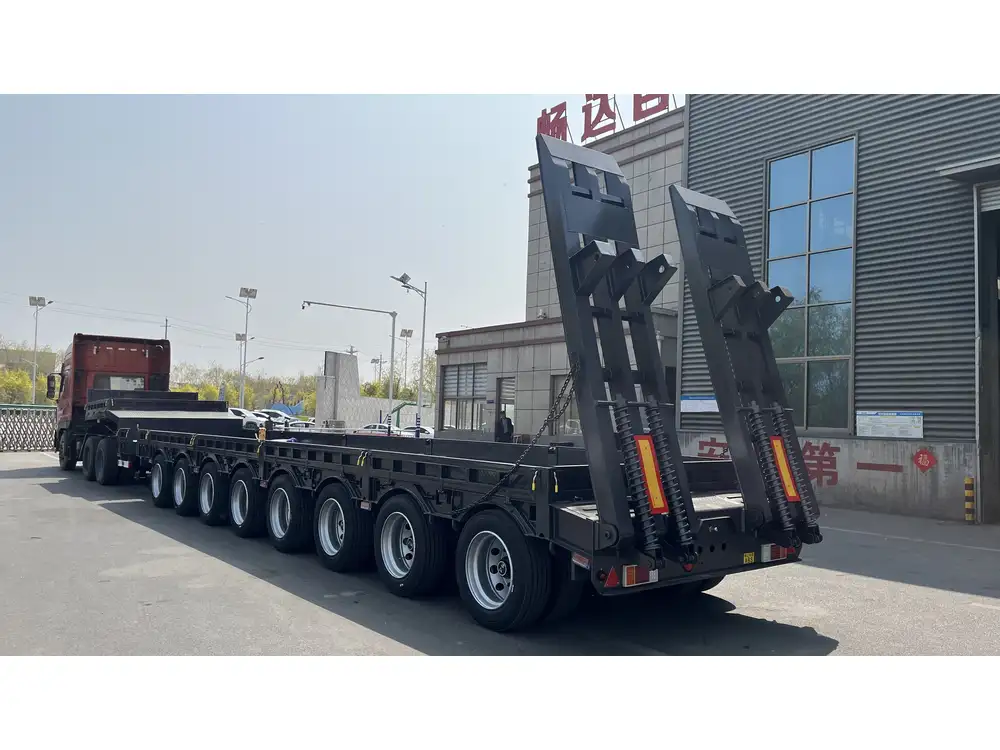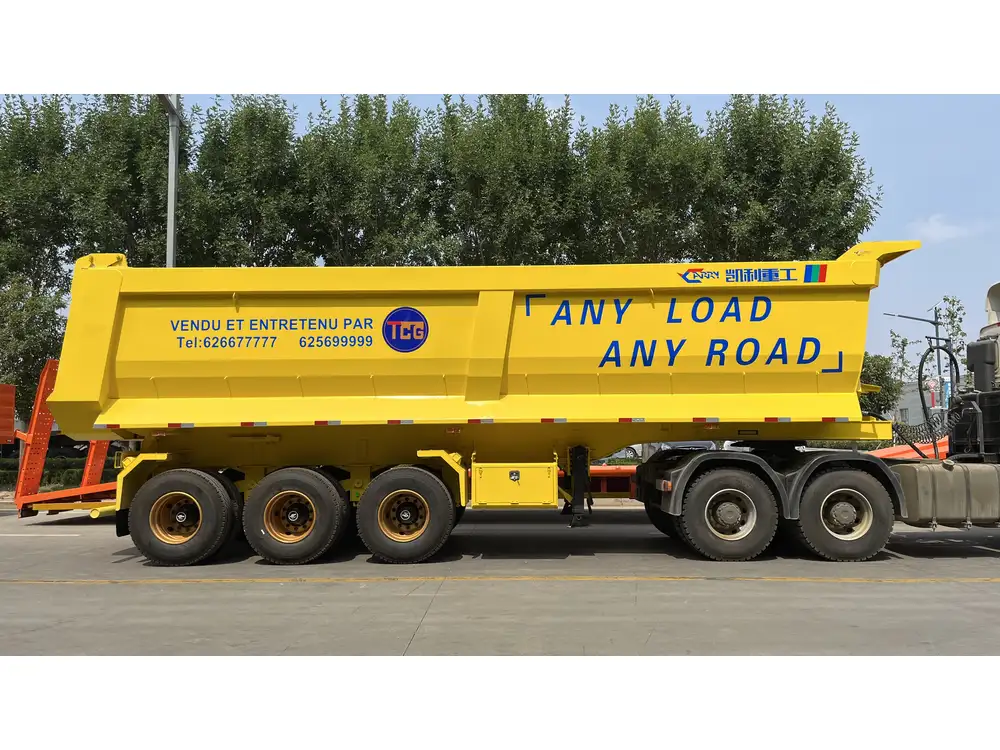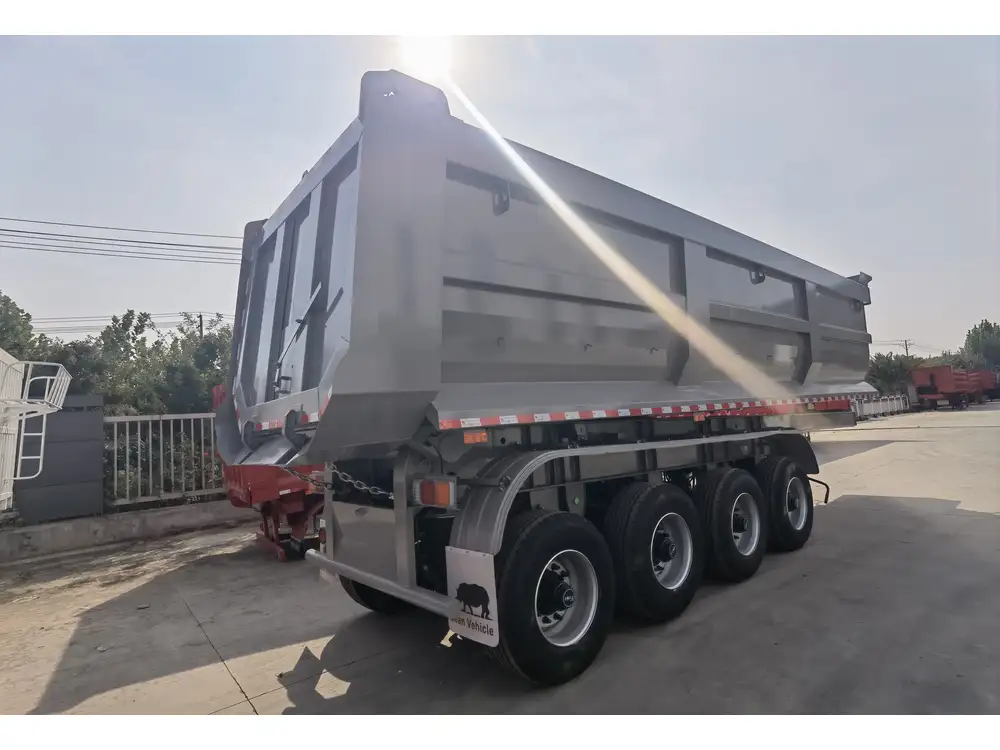In today’s eco-conscious world, harnessing solar energy has become increasingly popular. For professionals and recreational users alike, keeping equipment powered efficiently and sustainably is paramount, especially when it comes to heavy-duty vehicles like dump trailers. Selecting the right size solar charger for a dump trailer can significantly influence the performance and longevity of the trailer’s operations. In this detailed guide, we will explore how to determine the appropriate solar charger size for your dump trailer, highlight various considerations, and provide solutions tailored to facilitate optimal usage.
Understanding Solar Chargers and Their Applications
What Is a Solar Charger?
A solar charger converts sunlight into electrical energy through the photovoltaic effect. This energy can then be used to charge batteries or power devices directly. Solar chargers come in various forms, including portable panels and fixed installations, and can serve multiple applications ranging from small electronics to heavy machinery like dump trailers.

Common Applications for Solar Chargers in Dump Trailers
- Battery Maintenance: Solar chargers maintain battery charge levels when the trailer is not in use, preventing sulfation.
- Powering Equipment: For trailers equipped with hydraulic systems or electric ramps, solar chargers can supply adequate power to keep these systems operational.
- Travel and Remote Work: For construction enterprises working in remote locations, having a reliable solar charging system is vital to minimize downtime and ensure continuous operation.
Key Factors to Consider When Selecting a Solar Charger
1. Power Requirements of the Dump Trailer
Understanding your dump trailer’s power requirements is crucial. The total wattage needed can be calculated based on the components you intend to power.
| Component | Estimated Power Consumption (W) |
|---|---|
| Hydraulic System | 350 – 1200 W |
| Lights | 15 – 100 W per unit (depending on LED or incandescent) |
| Electric Ramps | 200 – 500 W |
| Radio/Communication | 20 – 50 W |

2. Battery Capacity
The battery size in your dump trailer determines how long the trailer can operate on solar energy. A common measurement unit for battery capacity is amp-hours (Ah). To estimate the minimum battery capacity required, consider the total watt-seconds used by your trailer divided by the voltage of the battery system.
For instance, if your dump trailer draws 500 watts and operates for 4 hours, the energy consumption is:
[ Total Watt-Hours = Power (W) \times Time (h) = 500W \times 4h = 2000Wh ]For a 12V system, the required amp-hours would be:
[ Amp-Hours = \frac{Total Watt-Hours}{Voltage} = \frac{2000Wh}{12V} \approx 167Ah ]3. Solar Charger Output
The output of a solar charger is typically measured in watts. A general rule of thumb is to match the output of your solar charger to the power consumption rate of your equipment. For the example above, if a dump trailer needs 500W, a solar charger capable of providing at least that output is necessary.
4. Sunlight Availability
The amount of sunlight available in the area where your dump trailer is used greatly influences the solar charger selection. Considerations include:
- Geographical Location: Different regions receive varying amounts of sunlight throughout the year.
- Seasonal Changes: Cloud cover and shorter days in winter months may reduce effective sunlight hours.
- Orientation and Tilt: Solar panels should be installed at an angle and direction that maximizes sunlight exposure.

5. Efficiency and Technology of Solar Panels
With solar technology advancing, the efficiency of solar panels can vary significantly. Higher efficiency panels produce more energy in less space which can be critical for compact installations. Consider the following types:
| Type | Efficiency (%) | Typical Applications |
|---|---|---|
| Monocrystalline | 15 – 22% | Limited space applications, high performance |
| Polycrystalline | 13 – 16% | Budget options, general installations |
| Thin-Film | 10 – 12% | Flexible applications but more space needed |
Selecting higher efficiency panels, despite the initial cost, can yield better long-term benefits, especially if space is limited.
Calculating the Appropriate Size of Solar Charger
Here’s a structured approach to calculating the proper solar charger size for your dump trailer:
Step 1: Determine Energy Consumption
As illustrated previously, calculate the total energy requirements in watt-hours (Wh).

Step 2: Evaluate Solar Insulation
Using local solar insolation data (measured in kWh/m²/day) helps provide an estimate of daily energy availability. For example, if your area receives an average of 5 hours of effective sunlight:
[ Daily Solar Output = Solar Panel Wattage \times Sunlight Hours ]Step 3: Size the Solar Charger
Divide the total energy consumption needs by the expected daily solar output to find the required solar panel wattage.
[ Required Wattage = \frac{Total Daily Watt-Hours}{Average Sunlight Hours} ]If a dump trailer consumes 2000Wh daily:
- With 5 sunlight hours, the necessary solar charger size would be:
Step 4: Consider Efficiency Losses
Account for efficiency losses of around 20% due to various factors. Thus,
[ Adjusted Wattage Requirement = \frac{400W}{0.8} = 500W ]Therefore, a solar charger of at least 500W is required for optimal performance.

Choosing the Right Inverter and Charge Controller
Inverters
If the equipment demands an AC supply, choosing the right inverter becomes essential. The inverter must handle the peak loads, so selecting an inverter rated higher than the total wattage calculation is advisable.
Charge Controllers
The role of Charge Controllers is paramount in solar energy systems, acting as regulators to prevent overcharging and prolong battery life. Types to consider include:
- PWM Controllers: Basic and cost-effective, suitable for smaller systems.
- MPPT Controllers: More efficient as they optimize the voltage and current, ideal for larger setups.

Installation Tips for Solar Chargers on Dump Trailers
Optimal Positioning
Align solar panels to face direct sunlight, taking into account any potential obstructions such as trees or buildings.
Secure Mounting
Ensure the solar panels are securely mounted to withstand vibrations and movements associated with dump trailers during transit.

Wiring Considerations
Use appropriately rated wiring materials to manage the load and prevent energy losses through resistance.
Regular Maintenance
Perform routine inspections of your solar panel system, checking for dirt accumulation or physical damage that may impair efficiency.
Challenges and Solutions

Weather Variability
Weather can play a significant role in the effectiveness of solar chargers. Users should be prepared to supplement solar power with traditional charging methods during prolonged cloudy periods.
Battery Maintenance
Periodic checks of battery health are essential to ensure longevity. Employing smart charging technology can assist in maintaining optimal battery conditions.
Conclusion
Selecting the correct size solar charger for your dump trailer can optimize performance, enhance sustainability, and save costs associated with diesel or conventional power sources. By understanding your energy requirements, assessing sunlight availability, considering the technology of solar panels, and making informed decisions about inverters and charge controllers, you can ensure a seamless integration of solar power into your trailer’s operations. As solar technology continues to evolve, embracing it today will undoubtedly pave the way for more efficient and green heavy equipment usage tomorrow.



